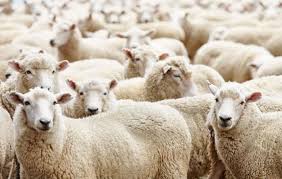The Australian wool market is facing a long road to recovery after the 2019/2020 selling season finished on a low note with the only positive trend being in the number of bales passed in.
The AWEX Eastern Market Indicator (EMI) dropped another 29 cents per kilogram to finish at 1110c/kg, clean.
Year-on-year the EMI has fallen 605 cents or 35.3 per cent and in US dollars a 428c fall, or 35.8pc lower.
The total national offering has seen a reduction of over 11pc with just 1,470,717 bales offered. This was 194,942 bales less than the previous season.
As expected, the total turnover year-on-year fell dramatically, dropping $1.219 billion from the previous season which was $3.192 billion.
The national passed in rate finished 6.5pc higher than the previous season, all due to falling prices.
According to industry specialists, the wool industry is facing a long road to recovery.
Executive director of The National Council of Wool Selling Brokers of Australia Inc., Chris Wilson, said the outlook is grim for the trade situation for China’s wool textile industry.
“The demand remains very week, reflecting the extremely difficult demand situation given the COVID-19 pandemic” Mr Wilson said
“China’s exports of wool products, top, yarn, fabric and clothing, accounts for half of the raw wool that China imports each year.
“And those exports have slumped in the first four months of 2020 with the decline most intense in exports of wool clothing and wool fabric.”
He quoted China’s exports of woven wool clothing were down by 35pc in the January-April period, while exports of wool knitwear dropped by 30pc.
In terms of destinations of China exports of wool clothing, exports to the US fell the most, down by 71pc, while those to Hong Kong were down by 69pc.
For wool fabric, all destinations recorded significant declines, including a 52pc drop in exports to Vietnam.
Mr Wilson said with the decline in exports of wool products, mills in China have cut back their purchases of raw wool.
“China’s imports of raw wool slumped by 23pc in the first four months of 2020,” Mr Wilson said.
“There has been a large drop in imports from all sources with the exception of South Africa – the lift for South Africa reflects the bounce-back from last year’s ban on imports from South Africa due to Foot and Mouth Disease.”
The 2020/2021 season commences next week with 31,072 bales on offer at all three selling centres.

